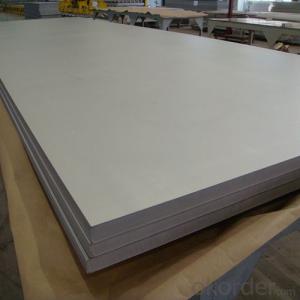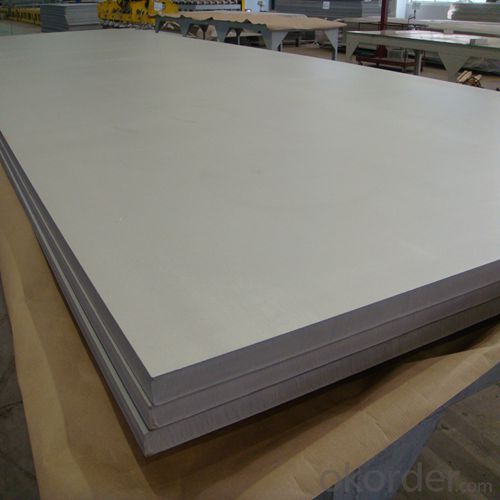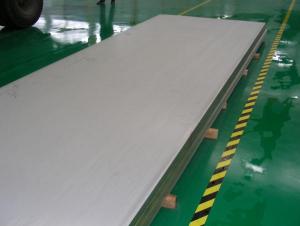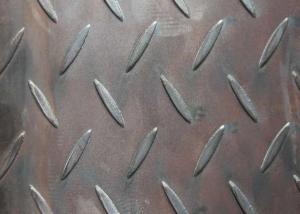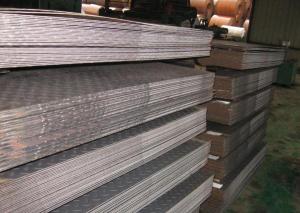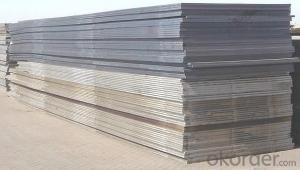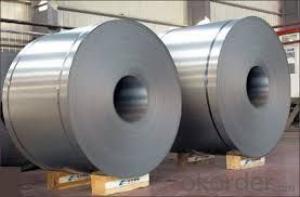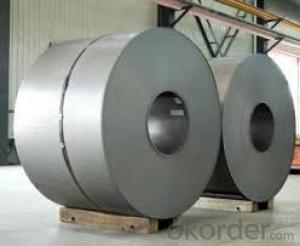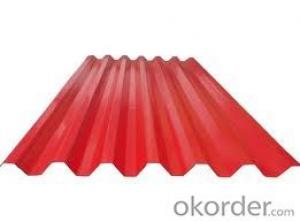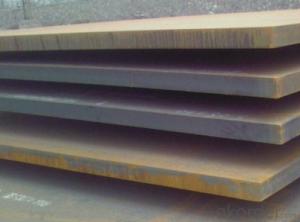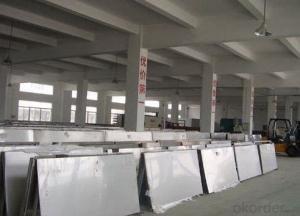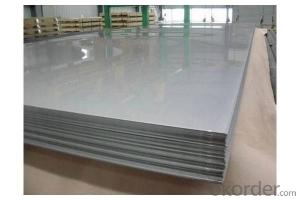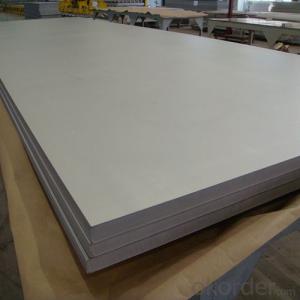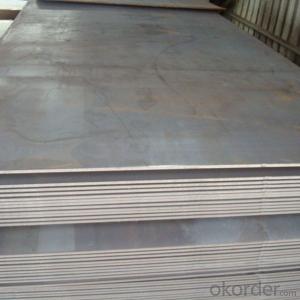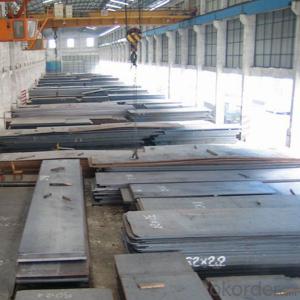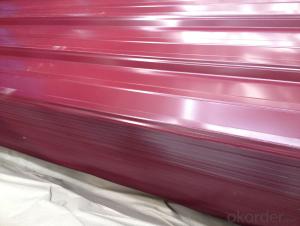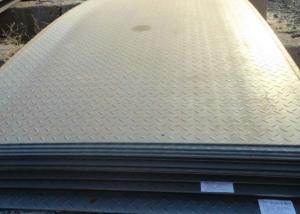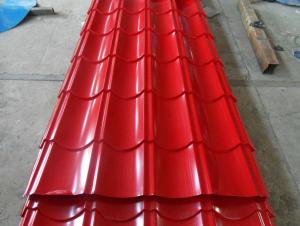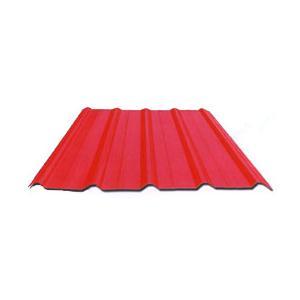Carbon Steel Plate China Structural Steel Plate High Quality Good Price
- Loading Port:
- Shanghai
- Payment Terms:
- TT or LC
- Min Order Qty:
- 1000 m.t.
- Supply Capability:
- 60000 m.t./month
OKorder Service Pledge
OKorder Financial Service
You Might Also Like
Product Description:
OKorder is offering Carbon Steel Plate China Structural Steel Plate High Quality Good Price at great prices with worldwide shipping. Our supplier is a world-class manufacturer of steel, with our products utilized the world over. OKorder annually supplies products to European, North American and Asian markets. We provide quotations within 24 hours of receiving an inquiry and guarantee competitive prices.
Product Applications:
Carbon Steel Plate China Structural Steel Plate High Quality Good Price are ideal for structural applications and are widely used in the construction of buildings and bridges, and the manufacturing, petrochemical, and transportation industries.
Product Advantages:
OKorder's Carbon Steel Plate China Structural Steel Plate High Quality Good Price are durable, strong, and resist corrosion.
Main Product Features:
· Premium quality
· Prompt delivery & seaworthy packing (30 days after receiving deposit)
· Corrosion resistance
· Can be recycled and reused
· Mill test certification
· Professional Service
· Competitive pricing
Product Specifications:
Introduction
Ordinary carbon structural steel and ordinary carbon steel. The carboncontent of less than 0.25% 0.06-0.22%, the most commonly used. Belongs to the low carbon steel, in each metal steel grades, minimum yield point thickness is less than 16mm. Compared with high-quality carbon structural steel, carbon content, performance and phosphorus, sulfur and other residual element content range. Provide security conditions in the China and some countries,ordinary carbon steel is divided into three categories: Steel (Xing Gang), only to ensure that the mechanical properties, does not guarantee the chemical composition, type B steel (B steel), only to ensure that the chemical composition, does not guarantee the special mechanical properties; steel(steel). Not only guarantee the chemical composition and mechanical properties, guarantee. Manufacturing structural components often used in special steel is very important..
Component is mainly used for the production of carbon structure steel structure engineering. It is commonly used to supply conditions, high sulfur,phosphorus content in steel, allows up to 0.050% and 0.045% respectively.Steel accounted for a larger proportion, total output in this steel.
3 application of this kind of steel from oxygen converter, open hearth furnaceor electric furnacesmelting, hot rolled steel, steel strip, the general part and bar. Plate usually volume (including control rolling) or normalizing treatment delivery. The chemical composition of the steel, mechanical properties, andbendingperformance shall comply with the relevant provisions.
In the Chinese national standard GB700-88 steel according to yield values are divided into 5 grades, and by mass is divided into 4 level. With the letter Qsymbol level, yield, yield value, quality rating symbol, consisting of 4 parts of the deoxidation method according to the order of.
The scope of application of this kind of steel is very extensive, mainly used for welding, riveting or steel structural bolts, minority is producing all kinds of machinery parts. Q195, and low strength of Q215 steel, the production of low carbon steel wire. Stainless steel wire mesh, the roof plate, welded steel pipe,anchor bolts and rivets etc.. Q235 steel of moderate intensity, and has good plasticity and toughness, easy forming and welding. This steel usually used for reinforcing steel structure, also used as a rivet, a railroad spike and variousmechanical parts, such as bolts, connecting rod, connecting rod. 255, Q275 high strength steel used in agricultural machinery production, can also be used as reinforcement of railway fishplate.
According to the special requirements for steel performance in some industries, for ordinary carbon structural steel composition adjustment and a series of professional steel after forming, such as cold heading steel, bridge steel, pressure vessel steel, steel, steel for boiler. In addition to the chemical composition of the strict control of steel used, so that the performance of the conventional, but also provides some special inspection of the project, such as low temperature impact toughness, aging sensitivity, gas in steel, inclusions and fracture etc..
Overview of Q235A features and scope of applications: Q235A toughness and the plasticity is good, have certain elongation, has good welding properties and hot workability. Q235A is generally used in hot rolling state, with steel, the rolling steel, steel plate, steel pipe can be used for welded structures, bridges and generally not important machine parts manufacturing all kinds of, such as bolts, rivets, rings and connecting rod, etc..
Said method: the symbolic quality rating symbol + deoxidation method of Q+ digital + composition. Its steel dubbed "Q", representing the yield point of steel, behind the figures to show that the yield point value units are MPa Q235 says such yield point (s) of carbon structural steel, 235 MPa. The necessary grades can be followed Mark said quality grade and deoxidizing method symbol. Quality level symbols are for A, B, C, D. Deoxidation method symbol: F said rimming steel;
B said semi killed steel: Z said calm steel; TZ said special calm steel, steel standard symbols not calm, namely Z and TZ are not standard. For example, Q235-AF said a rimmed steel. Carbon steel specially uses, such as for bridge steel.
FAQ:
Q1: Why buy Materials & Equipment from OKorder.com?
A1: All products offered byOKorder.com are carefully selected from China's most reliable manufacturing enterprises. Through its ISO certifications, OKorder.com adheres to the highest standards and a commitment to supply chain safety and customer satisfaction.
Q2: How do we guarantee the quality of our products?
A2: We have established an advanced quality management system which conducts strict quality tests at every step, from raw materials to the final product. At the same time, we provide extensive follow-up service assurances as required.
Q3: How soon can we receive the product after purchase?
A3: Within three days of placing an order, we will begin production. The specific shipping date is dependent upon international and government factors, but is typically 7 to 10 workdays.
Q4: What makes stainless steel stainless?
A4: Stainless steel must contain at least 10.5 % chromium. It is this element that reacts with the oxygen in the air to form a complex chrome-oxide surface layer that is invisible but strong enough to prevent further oxygen from "staining" (rusting) the surface. Higher levels of chromium and the addition of other alloying elements such as nickel and molybdenum enhance this surface layer and improve the corrosion resistance of the stainless material.
Q5: Can stainless steel rust?
A5: Stainless does not "rust" as you think of regular steel rusting with a red oxide on the surface that flakes off. If you see red rust it is probably due to some iron particles that have contaminated the surface of the stainless steel and it is these iron particles that are rusting. Look at the source of the rusting and see if you can remove it from the surface.
Images:
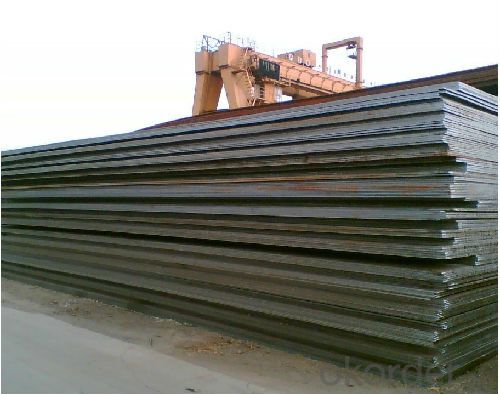
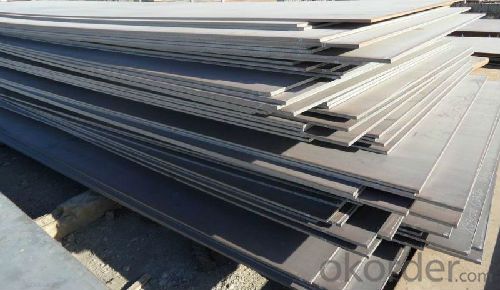
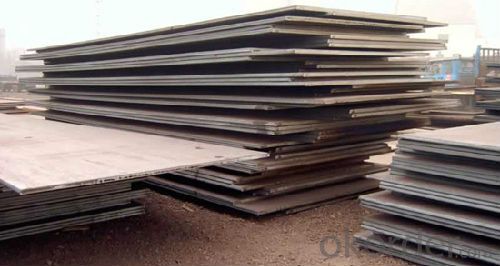
- Q: How do steel sheets perform in high-pressure environments?
- Steel sheets perform well in high-pressure environments due to their high strength and resistance to deformation. They can withstand the forces exerted by high-pressure gases or liquids without significant distortion or failure.
- Q: Can steel sheets be used for electrical transformer cores?
- Yes, steel sheets can be used for electrical transformer cores. Steel is a common material used for transformer cores due to its magnetic properties and ability to efficiently transfer and distribute electrical energy. The laminated core design of stacked steel sheets reduces energy losses through eddy currents and helps in transforming voltage levels effectively.
- Q: What is the typical hardness range for steel sheets?
- The typical hardness range for steel sheets varies depending on the specific grade and type of steel being used. However, in general, steel sheets typically have a hardness range between 150 and 250 on the Vickers hardness scale (HV). This range provides a good balance between strength and formability, making steel sheets suitable for a wide range of applications. It is important to note that hardness can be further adjusted through various heat treatment processes to achieve specific desired properties.
- Q: Are steel sheets resistant to vibrations?
- Yes, steel sheets are generally resistant to vibrations due to their high stiffness and strength properties.
- Q: What are the different types of steel sheet finishes for decorative purposes?
- For decorative purposes, one can find several varieties of steel sheet finishes that are commonly utilized. These finishes are applied to the steel sheet's surface with the intention of enhancing its appearance and achieving a desired aesthetic effect. Some of the most favored finishes for decorative purposes are as follows: 1. Brushed Finish: Achieved by brushing the steel sheet's surface with a fine abrasive material, usually in a straight line pattern, this finish imparts a smooth and satin-like appearance. It is widely used in architectural and interior design applications. 2. Mirror Finish: Also known as a polished finish, this type creates a highly reflective surface that resembles a mirror. The steel sheet is mechanically polished to achieve this finish, and it is commonly seen in decorative applications such as furniture, lighting fixtures, and signage. 3. Patterned Finish: This finish involves embossing or etching a pattern onto the steel sheet's surface. It can be achieved through various techniques like stamping, laser engraving, or chemical etching. Patterned finishes provide a decorative and textured appearance and are often used in applications like elevator panels, wall cladding, and decorative screens. 4. Colored Finish: To add vibrancy and enhance visual appeal, steel sheets can be coated with a colored finish. Processes such as powder coating are employed, where a dry powder is applied to the steel sheet and then cured to create a durable, colored finish. Colored finishes are commonly used in architectural applications like building facades and signage. 5. Antique Finish: This particular finish is designed to give the steel sheet an aged or weathered look, resembling antique metal. Various techniques such as chemical treatments, patinas, or distressing can be employed to achieve this appearance. Antique finishes are often utilized in decorative applications to create a rustic or vintage aesthetic. These are just a few examples of the diverse range of steel sheet finishes available for decorative purposes. Each finish provides a distinct appearance and can be customized to suit specific design preferences. The choice of finish relies on factors such as the desired look, application, and required level of durability for the project.
- Q: Can steel sheets be used for noise barriers?
- Yes, steel sheets can be used for noise barriers. Steel is a durable and robust material that can effectively block or reduce the transmission of sound. It has high density and mass, which helps to absorb and reflect the sound waves, preventing them from passing through the barrier. Steel sheets can be specifically designed and manufactured for noise reduction purposes, with features such as perforations or acoustic insulation materials to enhance their effectiveness. Additionally, steel sheets can be coated or painted to improve their resistance to weather conditions and corrosion. Overall, steel sheets are a viable option for constructing noise barriers, especially in areas with high levels of noise pollution.
- Q: How do steel sheets perform in terms of scratch resistance?
- Steel sheets are known for their exceptional scratch resistance. Due to their strong and durable nature, steel sheets are highly resistant to scratches and abrasions. This makes them ideal for various applications where the material may come into contact with potentially damaging objects or surfaces. Steel sheets can withstand normal wear and tear, making them suitable for heavy-duty and high-traffic environments. Additionally, steel sheets can be further enhanced with coatings or finishes to provide an even higher level of scratch resistance. Overall, steel sheets are renowned for their excellent scratch resistance, making them a reliable choice for many industrial and commercial applications.
- Q: What is the process of applying fire-resistant coatings to steel sheets?
- The process of applying fire-resistant coatings to steel sheets involves several steps. First, the surface of the steel sheets needs to be thoroughly cleaned to remove any dirt, grease, or contaminants. This can be done through abrasive blasting, solvent cleaning, or power washing. Once the surface is clean, a primer or base coat is applied to enhance adhesion and provide a smooth surface for the fire-resistant coating. The primer is typically applied using a brush, roller, or spray gun. After the primer has dried, the fire-resistant coating is applied. This coating is specifically designed to withstand high temperatures and provide protection against fire. It is usually applied in multiple layers for optimal effectiveness. The coating can be sprayed, rolled, or brushed onto the steel sheets. Once the fire-resistant coating is applied, it needs to cure or dry according to the manufacturer's instructions. This curing process ensures that the coating forms a strong bond with the steel surface and achieves its maximum fire-resistant properties. Overall, the process of applying fire-resistant coatings to steel sheets involves surface preparation, primer application, fire-resistant coating application, and curing. It is crucial to follow proper application techniques and adhere to manufacturer guidelines to ensure a durable and effective fire-resistant finish.
- Q: What is the typical yield strength of a steel sheet?
- The typical yield strength of a steel sheet can vary depending on the specific grade and thickness of the sheet. However, common steel grades used in construction and manufacturing typically have a yield strength ranging from 250 MPa to 550 MPa.
- Q: What is the process of manufacturing steel sheets?
- The process of manufacturing steel sheets involves several steps. First, the raw materials for steel production, which include iron ore, coal, and limestone, are obtained. These materials are then processed in a blast furnace to create molten iron. The molten iron is then refined in a basic oxygen furnace or an electric arc furnace, where impurities are removed and alloying elements are added to achieve the desired steel composition. Once the steel is refined, it is cast into slabs or billets, which are then reheated in a furnace to a temperature suitable for rolling. The reheated steel is then passed through a series of rolling mills, where it is shaped and reduced in thickness to form a continuous sheet. The rolling process involves multiple passes through the mills, with each pass gradually reducing the thickness of the steel and improving its properties. After the rolling process, the steel sheets are often pickled and treated with various coatings or finishes to improve their surface quality and corrosion resistance. Finally, the sheets are cut into specific sizes and may undergo additional processing, such as tempering or annealing, to further enhance their mechanical properties. Overall, the process of manufacturing steel sheets involves a combination of refining, casting, rolling, and finishing processes to produce high-quality sheets that meet the desired specifications.
Send your message to us
Carbon Steel Plate China Structural Steel Plate High Quality Good Price
- Loading Port:
- Shanghai
- Payment Terms:
- TT or LC
- Min Order Qty:
- 1000 m.t.
- Supply Capability:
- 60000 m.t./month
OKorder Service Pledge
OKorder Financial Service
Similar products
Hot products
Hot Searches
Related keywords
